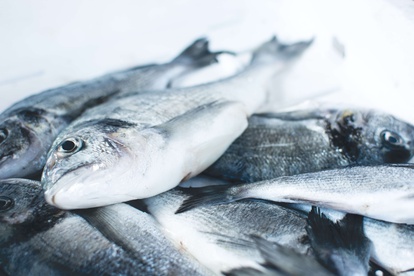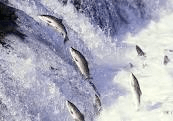Nutritionists often advise eating fish, which provides better protein than meat and contains nutrients such as omega-3 and phosphorus. These nutrients are very useful to the body, knowing that many people are truly deficient in omega-3.
Now, many scientists are warning us of the dangers of mercury in these fish. This is likely to be a complex problem as all waters around the world are becoming increasingly polluted.
Fish has always been the best source of omega-3. These famous fatty acids EPA and DHA which we lack so much today. But knowing that it is the fatty tissues that store the most toxins, you must be extra vigilant.
It is the larger fish at the end of the food chain that contain the most pollution as they feed on smaller fish, which are themselves already polluted.
If you still want to eat larger fish, look for the authentic Alaskan sockeye salmon caught in the open sea. On the one hand, it provides very good nutritional intake with reduced contamination because it is vegetarian and therefore does not consume other already polluted fish. On the other hand, its short life cycle gives it a reduced toxin accumulation.

If you are concerned about mercury poisoning, you can also precede your fish consumption by taking heavy metal chelating algae. Think of laminaria japonica or chlorella tablets.
There are other caveats in choosing your fish. First of all, there is the choice between wild or farmed fish. If possible, it is better to choose wild fish, because they have traveled a lot and therefore have a more "muscular" flesh, and this in a natural way, unlike their congeners locked in aquariums or farmed ponds. Recent research has shown that survival rates of wild fish that have been "exercised" are 13% higher than those of farmed fish. The former also have better growth and a more efficient immune system. Free-ranging fish have a more varied diet, consisting of what they find in nature and what their digestive system is programmed for, so their nutritional profile is much more complete and varied. Their natural food provides them with trace elements, fats, minerals, vitamins and antioxidants such as astaxanthin (algae pigment). It is these pigments that give color to the flesh of pink or red salmon. Some wild sockeye salmon are vegetarian (algae), while others feed on krill and plankton. At the end of their lives, they die of natural causes in their natural living environment. They thus participate in the eternal cycle of life in which they serve as food for another predator.
Farmed salmon are fed an artificial diet of grain products such as corn and soy, most of which are genetically modified. They also receive chicken meal and feather meal, and will have artificial coloration since they receive synthetic astaxanthin. This substance is not approved for human consumption, but it is authorized for feeding to fish. It is obvious that the taste of farmed salmon or wild salmon will be very different. As for fish raised on meal, the difference is marked in the omega-3/omega-6 ratio of their flesh. The proportion of omega-3 can be 600 to 1,000% higher in wild salmon. So you can easily understand that it is better to buy wild fish.

Farmed fish fed with genetically modified feed are usually given antibiotics to prevent disease outbreaks. They are raised in water that contains pesticides and chemical additives.
Be really careful because it was found that among the so-called "wild" salmon, 70 to 80% were actually farmed salmon, including in restaurants.
It seems that a guarantee mark is the name "Alaskan salmon" or sockeye salmon, because these types of salmon can not be raised. On the other hand, avoid the Atlantic salmon that are currently coming from fish farms.
And don't assume that other nutrients such as selenium (an antioxidant) in fish annihilate toxins or help your body eliminate them. Recent research has shown this assumption to be false.
In conclusion, small fish with a short life cycle are the best solution for essential fatty acid intake due to their higher nutritional values and reduced risk of contamination because they are at the beginning of the food chain. This choice includes sardines, anchovies and herring.